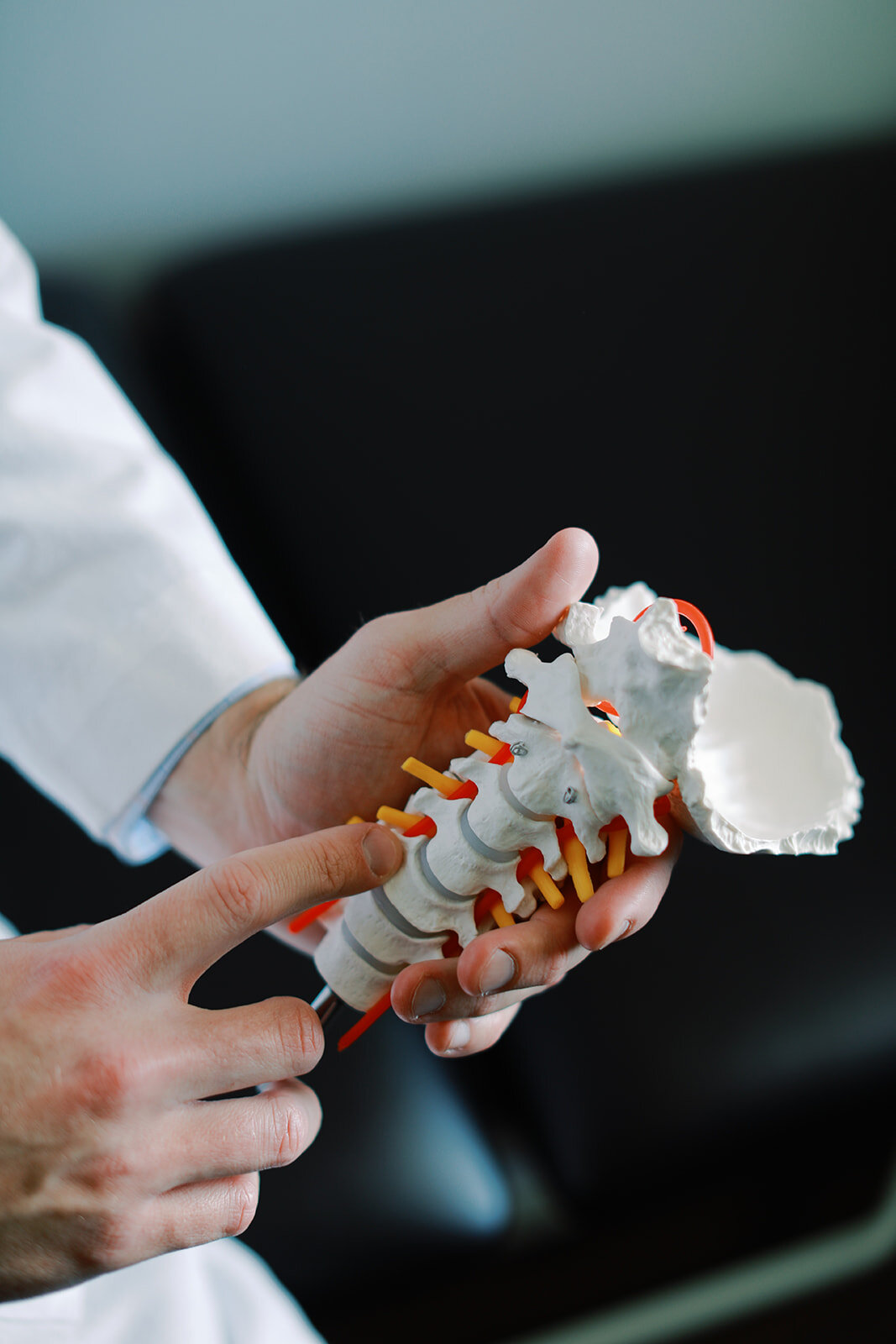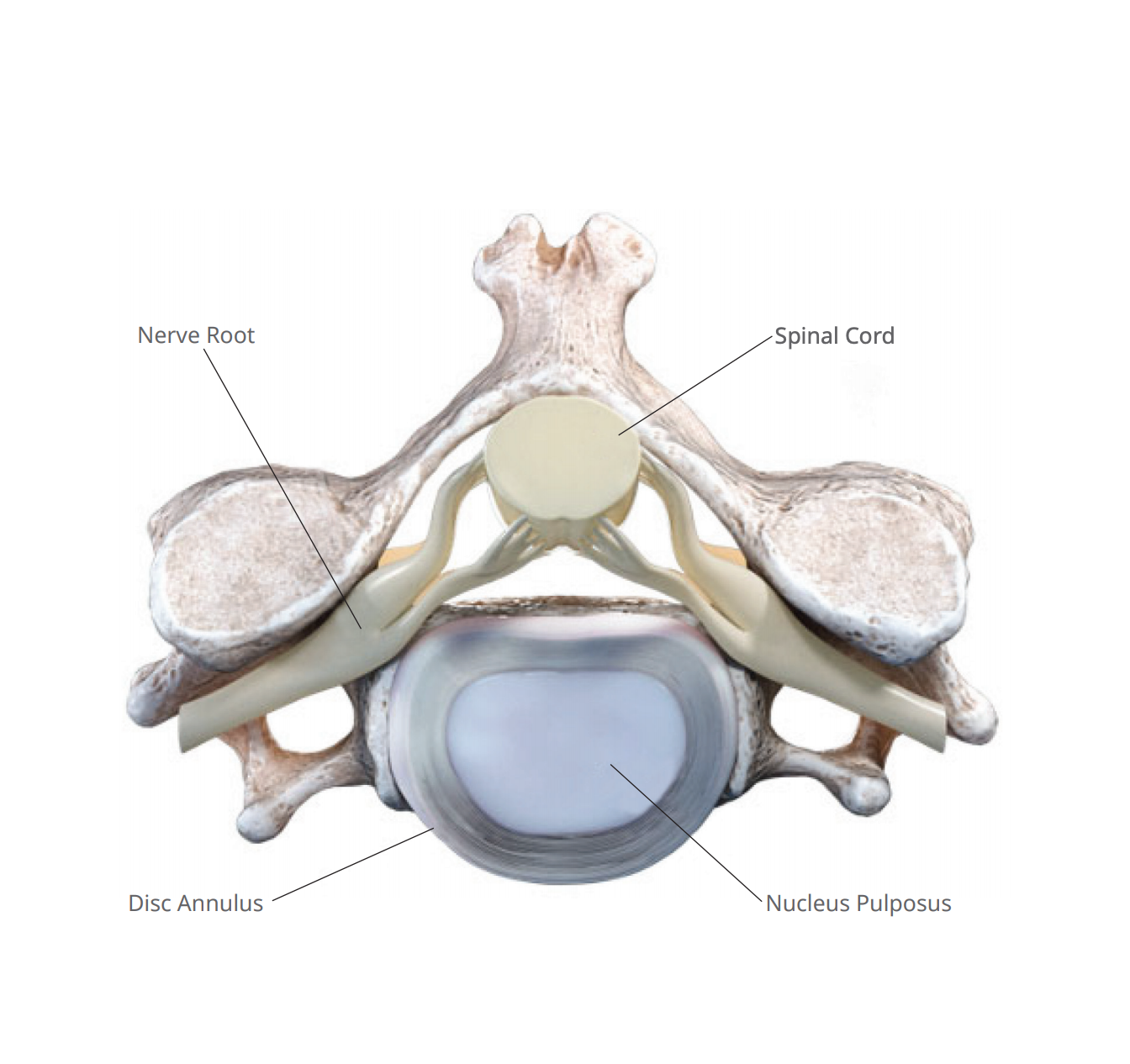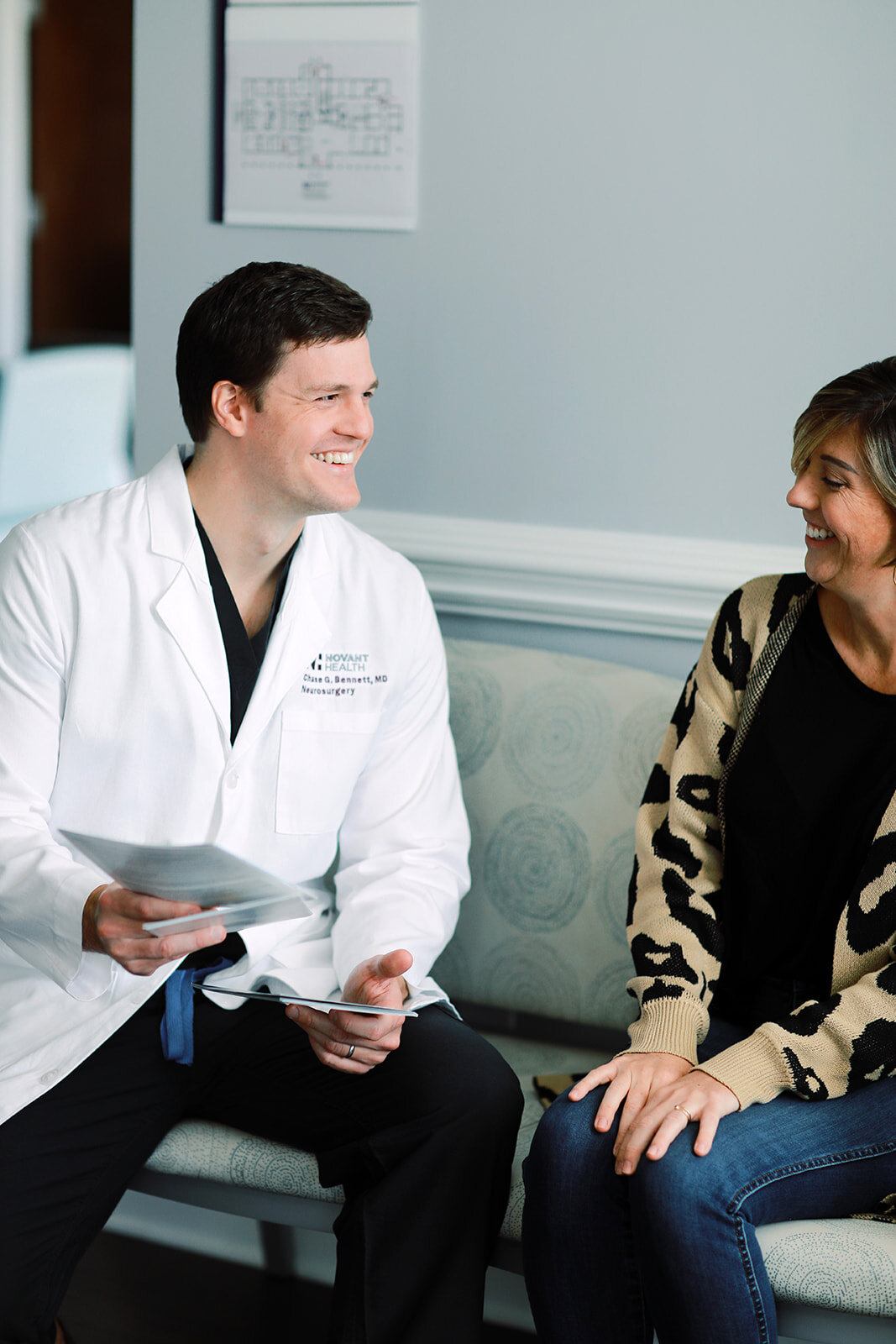If you have any questions about Cervical Disk Replacement or spine surgery, please call or visit our office or your primary/referring physician. This patient information is not a replacement for in-person professional medical advice.
General overview
During an artificial disc replacement, your doctor will remove the damaged disc. Any disc or bony materials pushing against the spinal cord and nerves will also be removed. The disc space will be filled with an implant called an artificial disc. This implant is designed to restore spacing between the vertebrae while preserving the motion of the spine.
What to expect
For those patients that are candidates, the Simplify® Cervical Artificial Disc surgery offers another option of treatment. It may help stop the pain and other problems caused by a damaged cervical disc. Artificial cervical disc replacement with the Simplify® Cervical Artificial Disc should relieve symptoms of the spinal cord or nerve root compression resulting from cervical disc degeneration. Additionally, it may:
Help movement of your neck in all directions.
Minimize your neck and arm pain.
Minimize tingling in your arms.
Help you return to your normal activities of work, family, and recreation.
During the artificial cervical disc replacement surgery, you will be asleep under general anesthesia and a small opening will be made in the front of your neck to access your cervical spine. The degenerated disc will be removed and the affected nerve will be relieved of pressure. The Simplify® Cervical Artificial Disc will be inserted into the disc space using specialized instruments. After the Simplify® Cervical Artificial Disc is placed, the opening will be closed.
As with any major surgery, you should expect some discomfort and to go through a period of recovery. Patients are normally released from the hospital within one day. Listed below are some topics your doctor or other healthcare professionals may discuss with you after the surgery:
Instructions on surgical wound care to be followed after leaving the hospital.
Avoid repeated bending, twisting, and lifting.
Use of oral medications to address pain or nausea.
Possible recommendation that you wear a neck brace for a limited period of time.
Schedule follow-up office visits to monitor your progress.
Guidance for gradually increasing limited activity at home.
An exercise program under the direction of a physical therapist.
Frequently asked questions
Will I have a large scar?
The average incision is about one (1) inch long. When it heals, it is usually not noticeable.
What happens if the surgery is not as effective as I had hoped?
If you experience new or increased neck or arm pain after surgery, it could be that the surgery was not effective. You may need additional surgery if your condition does not improve. Contact your doctor immediately if you experience neck or arm pain.
Can I receive an MRI after surgery?
Yes. MRI machines can vary. You should consult your doctor regarding testing conditions.



